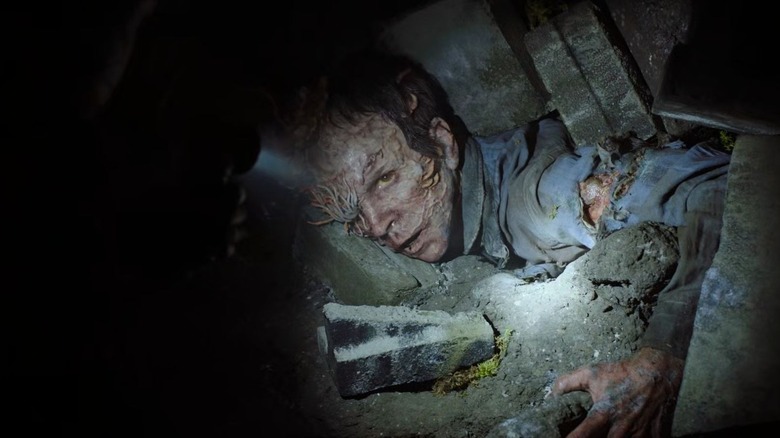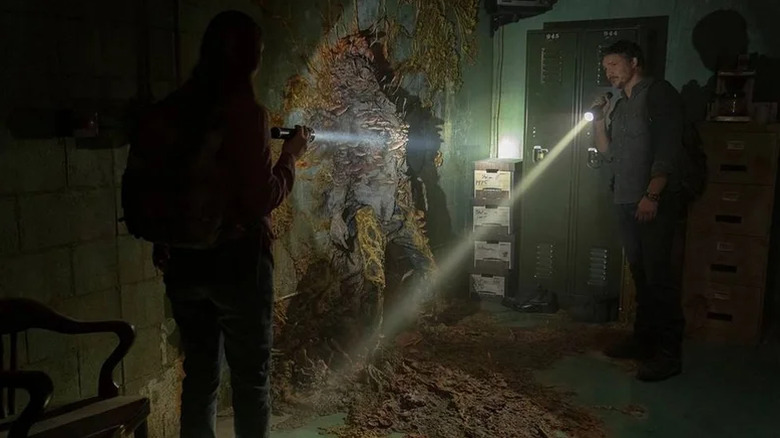The Last Of Us: Why The Infected Aren't Called Zombies
The zombie genre is one of the oldest and most resilient subgenres in horror, starting with Victor Halperin's seminal 1932 film "White Zombie" starring Bela Lugosi. The subgenre has evolved and seen many changes throughout the decades, with new variations, genre mixes, and reimaginings that keep the walking dead fresh and relevant. Whether that's George Romero defining the modern zombie with poignant social commentary in his "Dead" movie series that started with "Night of the Living Dead" in 1968, Danny Boyle bringing the genre to modern times with fast zombies and gritty handheld filmmaking in "28 Days Later," or "The Walking Dead" turning the undead into compelling TV drama in the 2010s.
One thing many modern zombie movies and shows have in common, which may appear bizarre for those not overly familiar with the genre, is the lack of the word "zombie." Indeed, zombie is almost a dirty word in the genre, with most modern movies and shows — from "Game of Thrones," to "Shaun Of The Dead" and even "The Walking Dead" — never uttering the word zombie. Instead, these stories find convoluted ways to refer to the undead by different names, like "walkers," "ghouls," "infected," or "biters." For the most part, this is down to zombie stories wanting to maintain the illusion of genre blindness, meaning the story can get away with having the characters never heard of zombies before, and slowly discover how to kill them rather than know their weakness immediately.
"The Last of Us" is one such show that never actually says the word zombie, calling the main creatures of the show "infected." Though that decision may seem arbitrary and silly at first, there is a very good reason why "The Last of Us" can't call the infected zombies.
Don't call them undead
By definition, a zombie is a reanimated corpse, a dead individual that starts moving as if they were alive despite being dead in every way. That's not what the infected in "The Last of Us" are. These are not dead people, they are very much living people — who are literally infected with the Cordyceps fungus.
That's right, biology doesn't lie, and the infected in "The Last of Us" are just that — people infected by a fungus that slowly takes away their consciousness and will. The show's fungal infection is also based on a very real and very terrifying real fungus that can eat away at its host and control it — without killing it. Because they are not just reanimated corpses, but people slowly mutating due to the infection, "The Last of Us" can have its cake and eat it too. It has the variety of creatures that you find in zombie games like "Resident Evil" while still making it part of the same progression of the zombification process.
You see, the Cordyceps infection happens in stages, as the fungus spreads, takes over its host, and slowly mutates its body. The different types of infected are not different creatures, but the life cycle of the Cordyceps infection, as fungal growths take over the body to the point where it becomes a sort of armor, making them big and bloated, and ultimately fusing the infected's body to the environment once the host body dies so the fungus can spread. In other words, don't call them zombies.

